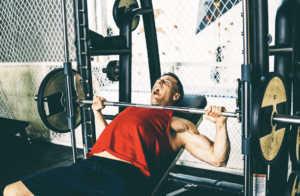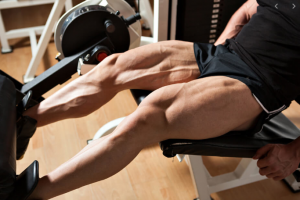What does good posture look like?
“Keep your spine neutral”, “tuck your shoulder blades”, “avoid butt wink”. These advice stem from classic physiotherapy looking for the position in which weight is evenly distributed across the body, so that no one structure experiences more stress than another. Usually this involves aligning ears, shoulders, hips, knees and feet when seen from the side.
Physiotherapy usually involves “correcting” imbalances. For example, if someone’s back is considered to be excessively curved (lordosis), physiotherapists will attempt to strengthen lengthened weaker muscles that straighten the back (abdominals) and stretch muscles that increase back curvature (lower back muscles). In other situations stretching is used to increase mobility in stale areas. Imbalances such as “sway back”, “forward head” or “anterior pelvic tilt” are often strived to be corrected as they are though to lead to muscle imbalances over time.
With respect to physiotherapy (not our field), it is unclear how necessary some of these “corrections” are. Stretching/ mobility training can definitely be important for improving function and range of motion (13-16), and while some of muscle imbalances may indeed exist and be corrected to help patients with pain, we haven’t seen research that consistently identifies these patients.
Can posture cause back and neck pain?
A lot of these techniques assume that your body is like a machine that can wear and tear over time. Our bodies, however, don’t necessarily work like robots do.
In fact there no agreement as to what is “good” and “bad” posture. Low quality snapshot studies (cross sectional) find that sitting still (1) or having various positions sometimes (2) happen with pain and psychosocial stress (1, 3), but that doesn’t tell us what is causing what. Are people still still because they are in pain or are the in pain because they are sitting still?
For neck pain, for example. There is research suggesting posture matters (8, 9) and some that shows it doesn’t (10). Looking at the research as a whole, however, no single type of spine posture seems to be consistently related to pain (once again, snapshot research only). (4, 5).
Looking back at people with back pain find no links to unequal leg length (6). People with a “forward head” posture don’t consistently go on to develop pain either, even when followed for 10 years. (7).
You are unique, so is your posture
We want readers to understand that your posture is UNIQUE to you. We are all born with slightly different skeletons and thus postures. A lot is in fact inherited from our parents. Your spinal curvatures may very well be how you are naturally built, and not be in need of “correction”.
That being said, as doctors we have to respect physiotherapy and admit that it isn’t our field. Bad habits and excessive repetitive external loads from work or carrying a backpack in a certain way may very well contribute to pain, and physiotherapists are much better than us at identifying these risks. The purpose of this article is simply to share our interpretation of the research we have read in order to stay evidence based.
Unfortunately, we far too often see physiotherapists which aren’t acting in line with the evidence. Kudos to those who are though, such as Team EBT members, Tom Walters, Maria Ekblom and Jonas Liefke.
Our advice on posture
1. Avoid sitting still in any same posture for too long.
2. Adjust posture when LIFTING WEIGHTS to minimize pain and maximize performance. This is a harder one and usually requires some professional guidance, as research is lacking.
If there are any points that we’ve missed we are happy to hear your thought and references to more research as this is no systematic review but only a summary of the research we have come across. We are happy to discuss further and paint an even more accurate picture if possible!
1. Prins et al. A systematic review of posture and psychosocial factors as contributors to upper quadrant musculoskeletal pain in children and adolescents. Physiother Theory Pract. 2008;24(4):221-42. 2. Rajnics et al. The importance of spinopelvic parameters in patients with lumbar disc lesions. Int Orthop. 2002;26(2):104-8. 3. Linton et al. Risk factors for neck and back pain in a working population in Sweden. doi: 10.1080/02678379008256963 4. Laird et al. Comparing lumbo-pelvic kinematics in people with and without back pain: a systematic review and meta-analysis. BMC Musculoskeletal Disorders. 2014;15:229. 5. Grob et al. The association of between cervical spine curvature and neck pain. Eur Spine J. 2007;16:669-678.⠀ 6. Grundy et al. Does unequal leg length cause back pain? A case-control study. Lancet. 1984;2(8397):256-8. 7. Okada et al. Does the sagittal alignment of cervical spine have an impact on disk degeneration? Minimum 10 year follow up of asymptomatic individuals. Eur Spine J. 2009;18:1644-1651. 8. Harrison et al. Modeling of the sagittal cervical spine as a method to discriminate hypolordosis: results of elliptical and circular modeling in 72 asymptomatic subjects, 52 acute neck pain subjects, and 70 chronic neck pain subjects. Spine. 2004;29(22):2485-92. 9. McAviney et al. Determining the relationship between cervical lordosis and neck complaints. DOI: 10.1016/j.jmpt.2005.02.015 10. Grob et al. The association between cervical spine curvature and neck pain. Eur Spine J. 2007;16(5):669-78. 11. Decoster et al. The effects of hamstring stretching on range of motion: a systematic literature review. J Orthop Sports Phys Ther. 2005;35(6):377-87. 12. Radford et al. Does stretching increase ankle dorsiflexion range of motion? A systematic review. Br J Sports Med. 2006;40(10):870-5. 13. Simic et al. Does pre-exercise static stretching inhibit maximal muscular performance? A meta-analytical review. Scand J Med Sci Sports. 2013;23(2):131-48.







